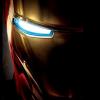Search the Community
Showing results for 'Tucson'.
-
Anybody knows when is this new SUV coming to town? https://www.hyundaiusa.com/all-new-tucson/
- 1,634 replies
-
- 3
-

-
- hyundai
- hyundaisuv
-
(and 3 more)
Tagged with:
-
Hey guys! I’ve created a SG Telegram group where all Hyundai Tucson car owners are able to chat and share all they know about Tucson! Hope yall may join and give support to one another 🤝🏻👍🏻 https://t.me/+6rkfIfK2DwhiMjI9
- 1,634 replies
-
- hyundai
- hyundaisuv
-
(and 3 more)
Tagged with:
-
Can try hyundai Hybrid. 6 speed DCT. I like it, so far. Have been driving the Tucson 1.6T hybrid for 2.5yrs. Pretty nice at 223hp.
-
Consumer Reports’ New Annual Auto Reliability Data Reveals Safest Bets and Riskiest Choices Among New Vehicles Lexus achieves top spot among automakers in auto reliability brand ranking with Mazda, Toyota, close behind. Buick continues as the most reliable domestic brand--and the only one in top 10. https://www.consumerreports.org/media-room/press-releases/2021/11/consumer-reports-new-annual-auto-reliability-data-reveals-safest-bets-and-riskiest-choices-among-new-vehicles/ Release date 11/18/2021. YONKERS, NY — Eight of the top ten most reliable brands are from Asia, and only one--Buick--is a domestic, according to the latest Annual Auto Reliability data from Consumer Reports (CR), the nonprofit research, testing, and consumer advocacy organization. But there were some positive indicators for the domestics, too, as American models topped seven vehicle categories--an unusually strong showing. The 2021 Auto Reliability Report is based on data collected from CR members about their experiences with more than 300,000 vehicles in the annual surveys. The survey findings were announced at an online news conference before the Detroit-based Automotive Press Association today. Owners reported everything from transmissions needing replacement after as little as 5,000 miles to display screens that required hardware replacement and misaligned tailgates and doors. "With new-car prices at all-time highs and a shortage of vehicles on dealers’ lots, it’s more important than ever to consider reliability when you invest in something new,” said Jake Fisher, senior director of auto testing at Consumer Reports. “Buying a reliable vehicle can help ensure that you’ll be able to hit the road when you need to, and not worry about getting stuck waiting on parts for repairs.” Other highlights from CR’s influential annual report include the following: Despite their complexity, hybrids and plug-in vehicles are among the most reliable models. High-end electric-powered Sport Utility Vehicles are among the least reliable vehicles, but NOT because of their relatively simple powertrains. Complex electronics are their Achilles Heel, at least for now. Some Hyundai, Kia, Subaru, and Toyota models continue to have problems due to technologically advanced, and complex, transmissions. CR’s auto statisticians calculate reliability ratings for every major mainstream car, minivan, SUV, and truck on the market, even ones that are brand-new and redesigned for 2021. To do so, the team analyzes annual CR member surveys data on a model’s reliability history, calculating the brand’s overall reliability and, if applicable, the reliability of models that use some of the same components. Consumer Reports’ analysis of new-car reliability is a key element of CR’s Overall Score, which is a holistic measure of a vehicle’s quality designed to make it easy for consumers to quickly find the best cars, SUVs, and trucks to suit their needs. The Overall Score also includes road-test performance, owner satisfaction survey results, whether a vehicle comes with key active safety systems, and results from crash tests, if applicable. “The pandemic is creating a scramble for consumers as they face a reduced supply of new cars and significantly higher prices. That's why it's more important than ever that people get trusted help finding safe, secure, and reliable vehicles,” said Marta Tellado, President and CEO of Consumer Reports. “Our annual reliability reports, combined with our comprehensive auto testing, can empower consumers with the trusted information to make better purchases and navigate this unusually difficult marketplace.” Eight of the 10 Top Brands are from Asia Of the top ten most reliable automakers, eight are headquartered in Asia, with Lexus, Mazda, and Toyota in the top three spots respectively. Historically, Lexus and Toyota have regularly been at the top of CR’s brand rankings for reliability. That’s an especially noteworthy accomplishment for Toyota, which has a wide array of different nameplates in the survey--13 in all. Mazda, which was the top brand overall last year, falls to second place. Mazda’s above average overall performance was marred by the Mazda3 small car, which has average predicted reliability due to problems with its climate system and in-car electronics issues. Mazda has a conservative design approach with shared platforms and similar components, which helps it to produce reliable vehicles overall. Mazda has also stuck with its dependable six-speed automatic transmission while other automakers use more complex ones with eight or nine ratios or continuously variable transmissions, some of which have proven troublesome. All Lexus models score average or better for reliability in CR’s report. The Lexus GX SUV is the most reliable new vehicle overall this year; owners reported no problems for the three model years that CR analyzed in the brand rankings. The UX is Lexus' only average model. Third-ranking Toyota has only one model scoring below average, the Corolla Hatchback; CR’s members reported issues that required a transmission replacement or rebuild. The RAV4 remains average mostly because of problems filling the fuel tank on some versions. The Tacoma and the redesigned-for-2021 Sienna are both also average; the Sienna showed some power equipment problems. Both the RAV4 Prime and Venza, new for 2021, are well above average. Infiniti ranks fourth overall, an admirable improvement of six spots this year. The Q50 sedan remains impressive and the troublesome QX50 SUV improved to average. Buick is the most reliable domestic brand, coming in at fifth place overall. The Encore and redesigned Envision are both well-above average, and the Encore GX is above average. Surprisingly, the Enclave drops to below average, with transmission, drive system, and blank in-car electronics screen issues. High Rankings for Several Domestic Models Mark Signs of Improvement for U.S. Manufacturers Models from five domestic brands, Buick, Chevrolet, GMC, Chrysler, and Ford, take the top spots in seven categories--an unusually strong showing. They include: Buick Envision (Luxury Compact SUVs) Chevrolet Trailblazer (Subcompact SUVs) Chevrolet Silverado 2500HD and its twin the GMC Sierra 2500HD (Full-sized Pickups) Chrysler 300 (Midsized/Large Cars) Ford Bronco Sport (Compact SUVs) Ford Mustang Mach-E (Electric SUVs) Ford Ranger (Midsized Pickups) CR’s data also shows that hybrids and plug-in vehicles are among the most reliable models even though they have unusually complicated drivetrains. These vehicles include the Honda Insight, Kia Niro and the Toyota Prius, Prius Prime, RAV4 Prime, and Venza. One likely reason for their reliability is that most of these are well-established models that haven’t seen radical changes over the years. Even the new-for-2021 Venza uses a tried-and-true powertrain. The analysis also shows that fully-electric SUVs are among the least reliable vehicles. They include the Tesla Model X and Y, Audi E-Tron and Volkswagen ID.4. All have a high rate of problems in areas other than the electric powertrain. Some of these problems include climate controls, in-car electronics, and power equipment. Honda Ranks Sixth in Brand Rankings Honda ranks sixth among brands, down one from last year, with the Insight scoring well-above average. The CR-V, Accord, and Ridgeline score above average and the remaining models are all average. Both the Passport and Odyssey have improved, though owners still report issues with the infotainment system freezing and power equipment. Some Odyssey owners also report problems with the sliding doors. Subaru comes in seventh overall. The Crosstrek is well-above average, and the Legacy, Impreza, and Forester are above average. However, the Ascent still has subpar reliability. Acura's rank is eighth overall. The TLX has exhibited impressive reliability in its first year after a redesign, and the redesigned 2022 MDX has above average first-year reliability after below-average reliability with its previous generation. The RDX improves from below average to average, though it still has ongoing issues with brakes, power equipment, and in-car electronics with the display screen freezing and needing hardware replacement, and software updates failing. Nissan improves this year, moving up to ninth place--mostly because of older models including the Rogue Sport, Murano, and Leaf, which show impressive reliability. Mini rounds out the top 10, making it the highest-ranked European automaker this year. Mini only has two models in the survey, the Cooper Countryman and Cooper/Clubman, and jumps 13 places in the standing. The jump is mainly attributed to its Cooper Countryman's outstanding reliability. Hyundai falls four positions this year to rank eleventh. The redesigned Tucson is well-above average, and the Sonata and Palisade are also above average. The Kona Electric and freshened Santa Fe are below average, with, respectively, battery pack and electric drive motor problems, and transmission and power equipment issues. Kia drops three to 19th place this year, with transmissions being the brand's weak spot. The eight-speed dual clutch transmission that is used with the turbo engine in the redesigned Sorento is problematic. Owners of the Soul, Seltos, and Forte report a problem-prone CVT that could require replacement. The Niro Electric improved and the Telluride remains outstanding. Genesis’ reliability is suffering as the brand rapidly grows with new models. While the G70 has improved to average, the new GV80 SUV scores well-below average due to infotainment screen and drive system problems. Four Domestic Brands are Midpack Domestic brands are midpack or below--Chrysler at 12th, Chevrolet at 14, Cadillac at 16th, and Ford at 18th. Jeep, Tesla, and Lincoln took the three bottom ranks. Chrysler has just two vehicles in the survey--the 300, which has outstanding reliability, and the Pacifica minivan, which is well-below average due to issues including the transmission and sliding doors. Chevrolet models spread across almost the entire range of CR’s reliability scale--some excellent and some subpar. The new Trailblazer SUV and the Trax are both excellent. After years of respectable reliability, the Bolt EV dropped to below average, due to battery problems and electric drive failures, among other issues. The Silverado 2500HD and Blazer are above average. Others, including the Corvette and redesigned Tahoe, are well-below average. GMC's rank dropped because of similar problems as twin models from Chevrolet. The Sierra 1500, Yukon, and Canyon are all below- or well-below average. GMC’s only above-average vehicle was the Sierra 2500HD. Cadillac improved six spots this year, helped by the reliable XT5 SUV. The XT6 and XT4 are below- and well-below average, respectively. Ford is showing improvement this year, with the new Bronco Sport, Mustang Mach-E, and Ranger all at the top of their classes for reliability. But the redesigned F-150 scored below average, as did the Escape. Both the Mustang and the Explorer are well-below average. Ram drops the most in CR’s brand ranking this year, sliding twelve spots to 21st. While the Ram 2500 and 1500 are both average, the 1500 Classic (the previous generation 1500) has well-below average reliability marked by problems with brakes, emissions systems, engine, and power equipment. Jeep ranks 26 and among the bottom three brands. The company’s most reliable model last year, the Gladiator, fell below average. The Cherokee and Wrangler are both below average. The Wrangler has issues with the drive system, in-car electronics, and, like the similar Gladiator, with the steering and suspension. The Cherokee has in-car electronics and some transmission issues. Tesla, with four models in the survey, is unchanged at second from last. While Tesla’s Model 3 has average reliability, the Model Y still has body hardware issues with the tailgate and door alignment, paint defects, and multiple other problems. The Model X and Model S both have body hardware, climate system, and in-car electronics problems. All Lincoln models have below-average reliability, with the Corsair and Aviator being well-below average. They, along with the Nautilus, have transmission, in-car electronics and power equipment problems. Mixed Bag for European Models Porsche ranks midpack at 13, down two from last year. The Cayenne and Macan have average and above-average reliability. Audi is unchanged at 15th. The A4 and A5 remain above average, and are joined by the A6 and Q5. The Q7 is average, but the Q3 has below-average reliability. The Q8 and E-Tron, both well-below average, continue to have drive system and power equipment issues. BMW is in 17th, down four. The X5, 3 Series, 5 Series, and X3 all have average reliability, but the redesigned 4 Series has subpar reliability due to power equipment problems. Volvo is 20th overall, down one. The XC90 continues to score well-below average, mostly due to issues with brakes, climate system, and body hardware. The S60 dropped to below average this year also because of multiple issues. The XC40 is average and the XC60 is now above average. Mercedes-Benz is in 23rd, down two from last year. The only reliable model is the GLC. The E-Class fell to below average and the GLE remains well-below average, with numerous power equipment, climate system, in-car electronics, and some engine problems. Volkswagen is at 24th overall, up 1 from last year. While the Atlas and Jetta improved to average reliability, the Tiguan and the new ID.4 EV are both subpar. For more information on CR’s 2021 #CRCarReliability findings, visit CR.org/reliability or follow us on Facebook, Twitter and Instagram @consumereports. About Consumer Reports Annual Auto Reliability Surveys The latest Consumer Reports Annual Auto Reliability Surveys, gathered information from the organization's members on more than 300,000 vehicles from model years 2000 to 2021. Members filled out online surveys in the spring and summer of 2021. CR’s reliability predictions are based on overall reliability for the past three model years, provided the vehicle has not been redesigned. One or two years of data will be used if the model was redesigned in 2021 or 2020. CR bases its reliability analysis on data gathered from CR members each year about problems they had with their vehicles in the past 12 months. CR’s team of statisticians and survey researchers, then analyzed trouble areas and created an overall reliability score for each model and year. Serious problem areas that can lead to expensive repairs are more heavily weighted. More information can be found at www.CR.org.
- 28 replies
-
- 3
-

-
- consumer reports
- car reliability
-
(and 1 more)
Tagged with:
-
25 years ago a brain scientist made a bet with a philosopher that in 25 years time well today they would find out where consciousness sits in the brain. The philosopher said they will never find it in 25 years! Christof Koch, the neuroscientist, and David Chalmers, the philosopher, butt heads in 1994 at a now legendary conference in Tucson, Ariz., called Toward a Scientific Basis for Consciousness. Koch was a star of the meeting. Together with biophysicist Francis Crick, he had been proclaiming in Scientific American and elsewhere that consciousness, which philosophers have wrestled with for millennia, was scientifically tractable. Not everyone in Tucson was convinced. Chalmers, younger and then far less well known than Koch, argued that neither 40-hertz oscillations nor any other strictly physical process could account for why perceptions are accompanied by conscious sensations, such as the crushing boredom evoked by a jargony lecture. I have a vivid memory of the audience perking up when Chalmers called consciousness “the hard problem.” That was the first time I heard that now famous phrase. Chalmers suggested that the hard problem might be solved by assuming that “information” is a fundamental property of reality. This hypothesis, unlike Crick and Koch’s 40-hertz model, could account for consciousness in any system, not just one with a brain. Even a thermostat, which processes a little information, might be a little conscious, Chalmers speculated. Unimpressed, Koch confronted Chalmers at a cocktail reception and denounced his information hypothesis as untestable and hence pointless. “Why don’t you just say that when you have a brain, the Holy Ghost comes down and makes you conscious?” Koch grumbled. Chalmers replied coolly that the Holy Ghost hypothesis conflicted with his own subjective experience. “But how do I know that your subjective experience is the same as mine?” Koch exclaimed. “How do I even know you’re conscious?” Koch was implicitly raising what I call the solipsism problem, to which I will return. Over the next decade, however, Koch’s position shifted dramatically, as he embraced an ambitious information-based model invented by neuroscientist Giulio Tononi. Called integrated information theory, or IIT, the model is much more detailed than the one Chalmers sketched out in Tucson. IIT holds that consciousness arises in any system whose components swap information in a certain mathematically defined way. In 2009 Koch spelled out the theory’s startling implications in Scientific American. A single proton, which consists of three interacting quarks, might possess a glimmer of consciousness, he conjectured. IIT seemed to corroborate the ancient metaphysical doctrine of panpsychism, which holds that consciousness pervades everything. Perplexed by these claims, in 2015 I attended a workshop on integrated information theory at N.Y.U. The speakers included Tononi, IIT’s inventor, Koch, now director of the Allen Institute for Brain Science, and Chalmers, co-director of N.Y.U.’s Center for Mind, Brain and Consciousness. Although most speakers at the workshop treated IIT gently, quantum computing expert Scott Aaronson eviscerated it. According to IIT’s mathematical definition of information, Aaronson pointed out, a compact disc player running error-correction codes can be far more conscious than a human being. I came away from the workshop with more basic objections to IIT. In a 1990 interview Claude Shannon, who invented information theory in the 1940s, told me that the information in a system is proportional to its capacity to “surprise” an observer, which I take to mean that information requires a conscious entity to be informed. Explaining consciousness with a concept that presupposes consciousness strikes me as circular reasoning—cheating. Moreover IIT, like all theories that allow for nonhuman consciousness, poses what I referred to above as the solipsism problem: no human can be sure that any other human is conscious, let alone a jellyfish, thermostat or proton. Koch has proposed building a “consciousness meter” that would measure consciousness in any object in the same way that a thermometer measures temperature, but this device remains a thought experiment, a fantasy. So where do things stand today? Thanks in part to the efforts of Koch and Chalmers, more researchers than ever are trying to solve the conundrum of consciousness. They are probing the brain with optogenetics, functional magnetic resonance imaging, transcranial magnetic stimulation and electrodes implanted inside brains. And they are modeling their data with ever more powerful, artificial-intelligence-augmented algorithms. These efforts were showcased at the 26th annual conference of the Association for the Scientific Study of Consciousness at N.Y.U., where Koch and Chalmers met to settle their bet. At the June 22–25 gathering, scores of researchers from all over the world, some unborn when Koch and Chalmers first clashed in Tucson, presented their latest ideas and data. The diversity of perspectives was dizzying. The old 40-hertz oscillation hypothesis of Crick and Koch has yielded to a welter of fancier neural-correlate models. In some, the prefrontal cortex is essential to consciousness; others focus on activity in different regions of the brain or involving specific types of neuron or modes of neural communication. Speakers also delved into the consciousness of primates, spiders and plants, the ontological status of virtual reality and dreams and the implications of dementia and other pathological states. One topic that was conspicuously absent was quantum mechanics, which physicists such as John Wheeler and Roger Penrose have linked to consciousness. Chalmers has recently toyed with a model that fuses integrated information theory and quantum mechanics. But when I asked Chalmers about the omission of quantum theories of consciousness, he informed me that they were too fringy for this conference. So quantum theories were beyond the pale. But what about the poster on how consciousness can be explained by relativity, which provides a way to unite first-person and third-person frames of reference? What about the session that considered whether artificial intelligences such as ChatGPT are conscious and hence morally responsible? What about the talks on mystical experiences induced by meditation, DMT and LSD? Speakers fretted over the proliferation of theories. “Growth is not always benign,” said philosopher Robert Chis-Ciure in a talk on falsification of theories. “Cancer is a good example.” During the same evening event at which Koch and Chalmers settled their bet, researchers presented the results of rigorous tests of integrated information theory and a rival model, the global workspace theory, in which consciousness serves as the brain’s way of spotlighting critical information. The results of the tests were inconclusive. Some data favor IIT; others favor the global workspace. This conclusion is hardly surprising, given that the brain is so hideously complex and that consciousness is so poorly defined, as multiple speakers acknowledged. All of this is to say that consciousness research, far from converging toward a unifying paradigm, has become more fractious and chaotic than ever. Back to the bet between Koch and Chalmers: They agreed that, for Koch to win, the evidence for a neural signature of consciousness must be “clear.” That word “clear” doomed Koch. “It’s clear that things are not clear,” Chalmers said, and Koch, grimacing, concurred. He stalked off the stage and reappeared with a case of wine as the audience laughed and applauded. Koch then doubled down on his bet. Twenty-five years from now, he predicted, when he will be age 91 and Chalmers will be age 82, consciousness researchers will achieve the “clarity” that now eludes them. Chalmers, shaking Koch’s hand, took the bet. A neuroscientist clad in gold and red and a philosopher sheathed in black took the stage before a packed, murmuring auditorium at New York University on Friday night. The two men were grinning, especially the philosopher. They were here to settle a bet made in the late 1990s on one of science’s biggest questions: How does a brain, a lump of matter, generate subjective conscious states such as the blend of anticipation and nostalgia I felt watching these guys? Before I reveal their bet’s resolution, let me take you through its twisty backstory, which reveals why consciousness remains a topic of such fascination and frustration to anyone with even the slightest intellectual leaning. I first saw Christof Koch, the neuroscientist, and David Chalmers, the philosopher, butt heads in 1994 at a now legendary conference in Tucson, Ariz., called Toward a Scientific Basis for Consciousness. Koch was a star of the meeting. Together with biophysicist Francis Crick, he had been proclaiming in Scientific American and elsewhere that consciousness, which philosophers have wrestled with for millennia, was scientifically tractable. Just as Crick and geneticist James Watson solved heredity by decoding DNA’s double helix, scientists would crack consciousness by discovering its neural underpinnings, or “correlates.” Or so Crick and Koch claimed. They even identified a possible basis for consciousness: brain cells firing in synchrony 40 times per second. Not everyone in Tucson was convinced. Chalmers, younger and then far less well known than Koch, argued that neither 40-hertz oscillations nor any other strictly physical process could account for why perceptions are accompanied by conscious sensations, such as the crushing boredom evoked by a jargony lecture. I have a vivid memory of the audience perking up when Chalmers called consciousness “the hard problem.” That was the first time I heard that now famous phrase. Chalmers suggested that the hard problem might be solved by assuming that “information” is a fundamental property of reality. This hypothesis, unlike Crick and Koch’s 40-hertz model, could account for consciousness in any system, not just one with a brain. Even a thermostat, which processes a little information, might be a little conscious, Chalmers speculated. Unimpressed, Koch confronted Chalmers at a cocktail reception and denounced his information hypothesis as untestable and hence pointless. “Why don’t you just say that when you have a brain, the Holy Ghost comes down and makes you conscious?” Koch grumbled. Chalmers replied coolly that the Holy Ghost hypothesis conflicted with his own subjective experience. “But how do I know that your subjective experience is the same as mine?” Koch exclaimed. “How do I even know you’re conscious?” Koch was implicitly raising what I call the solipsism problem, to which I will return. I highlighted the clash between Koch and Chalmers in a 1994 article for Scientific American, “Can Science Explain Consciousness?” I’ve been tracking their careers ever since. Their views hadn’t changed much when they made their wager in 1998 at the annual meeting of the Association for the Scientific Study of Consciousness, which they helped establish. Koch bet Chalmers a case of wine that within 25 years—that is, by 2023—researchers would discover a “clear” neural pattern underlying consciousness. Over the next decade, however, Koch’s position shifted dramatically, as he embraced an ambitious information-based model invented by neuroscientist Giulio Tononi. Called integrated information theory, or IIT, the model is much more detailed than the one Chalmers sketched out in Tucson. IIT holds that consciousness arises in any system whose components swap information in a certain mathematically defined way. In 2009 Koch spelled out the theory’s startling implications in Scientific American. A single proton, which consists of three interacting quarks, might possess a glimmer of consciousness, he conjectured. IIT seemed to corroborate the ancient metaphysical doctrine of panpsychism, which holds that consciousness pervades everything. Perplexed by these claims, in 2015 I attended a workshop on integrated information theory at N.Y.U. The speakers included Tononi, IIT’s inventor, Koch, now director of the Allen Institute for Brain Science, and Chalmers, co-director of N.Y.U.’s Center for Mind, Brain and Consciousness. Although most speakers at the workshop treated IIT gently, quantum computing expert Scott Aaronson eviscerated it. According to IIT’s mathematical definition of information, Aaronson pointed out, a compact disc player running error-correction codes can be far more conscious than a human being. I came away from the workshop with more basic objections to IIT. In a 1990 interview Claude Shannon, who invented information theory in the 1940s, told me that the information in a system is proportional to its capacity to “surprise” an observer, which I take to mean that information requires a conscious entity to be informed. Explaining consciousness with a concept that presupposes consciousness strikes me as circular reasoning—cheating. Moreover IIT, like all theories that allow for nonhuman consciousness, poses what I referred to above as the solipsism problem: no human can be sure that any other human is conscious, let alone a jellyfish, thermostat or proton. Koch has proposed building a “consciousness meter” that would measure consciousness in any object in the same way that a thermometer measures temperature, but this device remains a thought experiment, a fantasy. So where do things stand today? Thanks in part to the efforts of Koch and Chalmers, more researchers than ever are trying to solve the conundrum of consciousness. They are probing the brain with optogenetics, functional magnetic resonance imaging, transcranial magnetic stimulation and electrodes implanted inside brains. And they are modeling their data with ever more powerful, artificial-intelligence-augmented algorithms. These efforts were showcased at the 26th annual conference of the Association for the Scientific Study of Consciousness at N.Y.U., where Koch and Chalmers met to settle their bet. At the June 22–25 gathering, scores of researchers from all over the world, some unborn when Koch and Chalmers first clashed in Tucson, presented their latest ideas and data. The diversity of perspectives was dizzying. The old 40-hertz oscillation hypothesis of Crick and Koch has yielded to a welter of fancier neural-correlate models. In some, the prefrontal cortex is essential to consciousness; others focus on activity in different regions of the brain or involving specific types of neuron or modes of neural communication. Speakers also delved into the consciousness of primates, spiders and plants, the ontological status of virtual reality and dreams and the implications of dementia and other pathological states. One topic that was conspicuously absent was quantum mechanics, which physicists such as John Wheeler and Roger Penrose have linked to consciousness. Chalmers has recently toyed with a model that fuses integrated information theory and quantum mechanics. But when I asked Chalmers about the omission of quantum theories of consciousness, he informed me that they were too fringy for this conference. So quantum theories were beyond the pale. But what about the poster on how consciousness can be explained by relativity, which provides a way to unite first-person and third-person frames of reference? What about the session that considered whether artificial intelligences such as ChatGPT are conscious and hence morally responsible? What about the talks on mystical experiences induced by meditation, DMT and LSD? Speakers fretted over the proliferation of theories. “Growth is not always benign,” said philosopher Robert Chis-Ciure in a talk on falsification of theories. “Cancer is a good example.” During the same evening event at which Koch and Chalmers settled their bet, researchers presented the results of rigorous tests of integrated information theory and a rival model, the global workspace theory, in which consciousness serves as the brain’s way of spotlighting critical information. The results of the tests were inconclusive. Some data favor IIT; others favor the global workspace. This conclusion is hardly surprising, given that the brain is so hideously complex and that consciousness is so poorly defined, as multiple speakers acknowledged. All of this is to say that consciousness research, far from converging toward a unifying paradigm, has become more fractious and chaotic than ever. Back to the bet between Koch and Chalmers: They agreed that, for Koch to win, the evidence for a neural signature of consciousness must be “clear.” That word “clear” doomed Koch. “It’s clear that things are not clear,” Chalmers said, and Koch, grimacing, concurred. He stalked off the stage and reappeared with a case of wine as the audience laughed and applauded. Koch then doubled down on his bet. Twenty-five years from now, he predicted, when he will be age 91 and Chalmers will be age 82, consciousness researchers will achieve the “clarity” that now eludes them. Chalmers, shaking Koch’s hand, took the bet. “I hope I lose,” Chalmers said, “but I suspect I’ll win.” I suspect so, too. I bet consciousness will be even more baffling in 2048 than it is today. I hope to live long enough to see Koch give Chalmers another case of wine. https://www.scientificamerican.com/article/a-25-year-old-bet-about-consciousness-has-finally-been-settled/
- 19 replies
-
- science
- engineering
-
(and 1 more)
Tagged with:
-
TL;DR - A Hyundai Tucson reverses into a stationary car at the traffic lights along Esplanade Drive. Plot twist; the Tucson is a Singapore Police Force vehicle. A video of a Singapore Police Force Hyundai Tucson reversing into another car has surfaced on SGRV’s Facebook page. Since its posting around midnight, it has garnered a whopping 203 shares. Watch the 53-second video here: What happening? Image: Hyundai.com.sg The driver of the latest Police fast response Hyundai Tucson does a serious booboo. As mentioned earlier, the cam car and the Tucson stop at a traffic light. However, in a strange turn of events, the Tucson reverses and hits the front of the cam car. I think the Police officer wanted to turn right instead of going straight and did not check his blind spots or rear-view mirror. Does this place look familiar? If you’re unsure of where this takes place, here’s a rough idea of where I think this incident happened. It should be at this junction highlighted above. Another interesting thing After the ‘collision’, the red and blue lights on the Police vehicle suddenly light up. Not sure why. Pretty strange. But one Netizen had a theory. Online Chatter Let’s look at other interesting comments. These comments don’t fail to disappoint. Well, suffice to say, the Police Officer is definitely BBQ-le. ========= Be the first to get the latest road/ COE news and get first dibs on exclusive promos and giveaways in our Telegram SGCM Community. Join us today!
- 7 comments
-
- spf
- singapore police force
- (and 11 more)
-
At that time I was pondering between Sonata and Tucson. Eventually I got Tucson. I can't remember I got Tucson 1 or 2 months after or before you got your Sonata.
-
Current kodiaq (2022) non-RS (which is still very good) is $199,900. https://www.skoda.com.sg/offers-and-pricing/promotions/final-sale-of-2023 Even a current Tucson is $243,999. No need to say santa fe or pallisade. If i am you, i go for Kodiaq at $199,900 (probably can nego some more) already. If you want, i recommend you the Skoda sales exec who served me last time, you sure can get at least further $500 discount for my referral. The other 'cheapest' 7 seater is Sienta lor.
-
Citroens are vfm nowadays. In fact I was at Cars@Expo and they said they sold out their yearly allocation of C4s hence they're not selling it aggressively vs Pug 2008. C5AC might look small but they're comparable to the size of a Tucson or etc and has been cheaper than a Corolla Altis by 10+k since the 1.2L was launched. Having experienced the C4 Cactus (just sold) for a year (full story for a day) with a mere alternator change for 1.2k at C&C (outside is ard 700-800), they're looking ok to me. The dreaded ETG is crap (Seat Toledo's DSG is rubbish too) but the new AISIN 6-spd is good, can't complain about Toyota products right? Edit: after testing the Toledo (Diesel) I miss the relatively cush ride of the Cactus
-
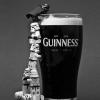
Choices for a family sized SUV - just sharing my search
therock replied to therock's topic in General Car Discussion
Hyundai This was an interesting and educational trip Kona - this is a much more grown up version, with a decent size and fairly large cabin, but the driver's setup is also not to my taste, again, I think it's my body, haha Tucson - now this car has a six speed auto, with a 1.5l Turbo and hybrid - nice cabin, decent fit and finish - good seats, highly adjustable and I can get comfortable in it - battery warranty is only 8 years, but it seems they will change this to ten soon - 215k and up... not cheap - auto tailgate takes 4 seconds, so if it rains, you'll be in trouble I also tried a different kind of car The Ioniq 5 - this is more like a sedan crossover, but why not? - very impressive price - under 190k for the most basic, BUT, many things / features are missing from the basic version, so many end up spending another 15k more for the mid tier cat A version - free wall charger for landed owners - made in Singapore - pride - excellent legroom and boot - low range = 384km for the entry level - 10 yr battery - if you're younger and more flexible it's easier to enter and get comfortable, the door aperture is smaller than the SUVs like the Tucson - breathtaking acceleration - many storage options and gizmos - many real buttons to use instead of just touchscreens like the Tesla - like -
Quite clearly, the Korean are leading in the design aspect... Hyundai Tucson Hybrid Standard Wheelbase Long Wheelbase
- 215 replies
-
- 12
-

-
A discretionary right turn goes wrong and ends up in a collision at Yishun Avenue 2. The incident occurred yesterday (June 22) when a white Honda Civic attempted to perform a discretionary right turn at a junction and collided with a black Hyundai Tucson. The video also showed another van swerving around the Honda Civic after the crash to avoid hitting it again. A pedestrian was also seen lying on the ground at the end of the video. However, it was not specified if the black Hyundai Tucson had hit the pedestrian. A discretionary right turn refers to a junction allowing for motorists to make a right turn as long as there is a suitable gap in oncoming traffic. The driver is allowed to decide when to turn right when he or she feels that it is safe to do so without the need for a green arrow. This is not the first time that a vehicle performing a discretionary right turn ends up in a serious traffic accident. In 2018, two high-profile traffic incidents involving vehicles attempting to perform discretionary right turns resulted in the deaths of two people. According to Channel News Asia, the Land Transport Authority announced plans to phase out discretionary right turns in Singapore following the two fatal accidents. By 2023, more than 1,200 junctions will have red-amber-green turning arrows. While the importance of discretionary right turns has been a popular debate topic, it goes without saying that drivers should take extra precaution when performing such manoeuvers. --- Thinking of selling your car? sgCarMart Quotz guarantees the highest selling price for your car. We’ll even give you $100 cash if you find a better offer elsewhere! Get a free quote to find out how much your car is worth today!
- 2 comments
-
- discretionary right turn
- yishun
-
(and 2 more)
Tagged with:
-
http://www.sgcarmart.com/news/article.php?AID=15533 new turbocharged 1.6-litre T-GDI engine, which will be available in Singapore in the fourth quarter of this year, comes with a new seven-speed Dual-Clutch Transmission (DCT) and will deliver a responsive drive of up to 175bhp.
- 128 replies
-
- 1
-

-
- hyundai
- hyundaikorean
- (and 6 more)
-
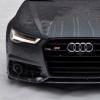
Choices for a family sized SUV - just sharing my search
Soya replied to therock's topic in General Car Discussion
After going one big round from changi to tuas, tink TS found the answer liao: Tucson Hybrid! -

Choices for a family sized SUV - just sharing my search
Theoldjaffa replied to therock's topic in General Car Discussion
I like the current Tucson for its design and the interior looks good too 👍 -

Choices for a family sized SUV - just sharing my search
Soya replied to therock's topic in General Car Discussion
Any NA car paired w CVT juz makes a lot noise n little progress....lol Haven't driven it but hv been hearing some good stuff abt the Tucson Hybrid. Even TG rated it highly Kimchi car u often think, how did they pack so much in it for that price? Which is not what u can say for jap cars nowadays.... -

Choices for a family sized SUV - just sharing my search
therock replied to therock's topic in General Car Discussion
Wah, 2.5l and not enough for you? Here they are all 2l and no turbos... but somehow, I couldn't get as comfortable in the RAV4 as I could in the CX5 and Forrester.. Even the Tucson had a better sitting position. I tried an older Lexus and it was nice, but $$ The W246 has the best and most comfortable seat for me over long distances.. the Hyundai Elemental was nice too -

Choices for a family sized SUV - just sharing my search
Theoldjaffa replied to therock's topic in General Car Discussion
@therock try BYD Atto3. It’s quite impressive. I like the Tucson & Kodiaq too. -
Have to say that Kia is really stepping up the game. Basing on these silhouette shots, I think it 同父异母 (same father different mother) sibling, Hyundai Tucson, has no fight... The official teaser campaign for the 2022 Kia Sportage has begun. The new Sportage will be officially unveiled on 8 June 2021,which is exactly 1 week from now.
- 58 replies
-
- 13
-

-
I remember this case. ang moh beach driving the Tucson. But then some people think a cyclist helmet is impenetrable
-
https://www.motor1.com/news/434929/hyundai-tucson-unofficial-teaser-sketch/ New Hyundai Tucson Teaser Reveals Futuristic Screen-Based Interior By now, you're probably aware that the Hyundai Tucson will get a next-generation version for the 2021 model year. The Korean compact crossover has been spied numerous times as early as August last year, and several renderings that bear its new face have already come out. Of note, Sangyup Lee, head of the Hyundai Design Center, touted that the next-gen Tucson's design will freak us out, while Andrew Tuatahi, Hyundai’s product planning manager, claims that the 2021 Tucson is "very interesting visually." While the exact date of the next Tucson's isn't out yet, we discovered an alleged teaser sketch through a French forum called World Scoops. The sketch (shown atop this page) exposes the alleged new Tucson's interior, which looks to contain a lot of display screens – on the center of the dashboard and on the instrument cluster. This is akin to the next-generation of MBUX that we'll see in the 2021 Mercedes S-Class, which was officially reviewed earlier this month. Hyundai, however, denied releasing the said sketched interior teaser. "We have not released any teaser of the next generation Tucson. So we cannot confirm," according to the automaker. While the officiality of the said interior sketch is questionable at this time, we can't deny that it highly resembles the spied interior images that other sites reported last month. If ever the proposed screen-infested cabin transcends into the production-spec, we won't be surprised either, considering that a lot of automakers have already adopted the tech-filled future of cars. We'll know more about the next-generation 2021 Hyundai Tucson by the end of this year. As mentioned, though, no exact month or date has been set yet, so just continue to watch this space for further updates about the Korean compact crossover.
- 1,634 replies
-
- 1
-

-
- hyundai
- hyundaisuv
-
(and 3 more)
Tagged with:
-

Hot N versions of Hyundai i20 and Tucson said to be coming
chitchatboy posted a blog entry in MyAutoBlog
Rumors of the Hyundai i20 and Tucson getting hotter N variants have been circulating before the launch of the i30 N. According to AutoExpress, both models have seem to be given the green light for production since then. Set to go on sale in about two years from now, the Tucson N will have around 335bhp, enabling it to hit 100km/h from a standstill in six seconds or so. Likely to be powered by a 2.0-litre turbocharged engine, the car will go up against the Cupra Ateca and its other rivals. Naturally, the SUV will also benefit from the usual handling upgrades to make sure it can handle the extra power. As for the possible i20 N hatch, the Korean company feels that it needs a proper Ford Fiesta ST and Renault Clio R.S. rival. Set to debut next year, it will be blessed with the classic modern hot hatch formula: a electronic differential, front-wheel drive and a turbocharged engine that will produce more than 200bhp. -
We test-drove Hyundai’s compact SUV - 2019 Tucson. Our tester had 1.6L diesel called ‘smartstream,’ and it was mated 7 speed DCT. Let’s review Tucson’s 0-60 times and braking performance, as well. 4,480x1,850x1,645x2,670 (lengthxwidthxheightxwheelbase) 1.6 SmartStream diesel (136ps/4,000) (32.6kg.m/2,000~2,250) 7 DCT / HTRAC Alll Wheel Drive Adaptive Cruse Control, LKAS, Panoramic Roof and ect. Competition: Kia Sportage, Hyundai Creta, Jeep Comapss, Toyota Fortuner, VW Tiguan, Honda CR-V https://youtu.be/ql2kJmf8tNc



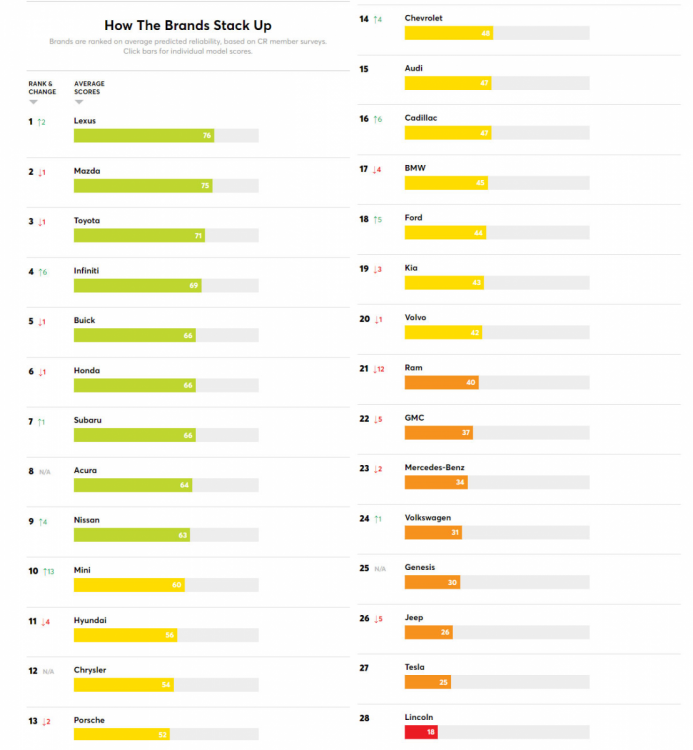

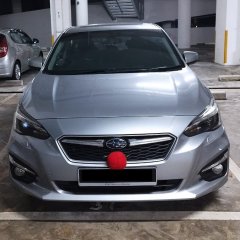




.png)
